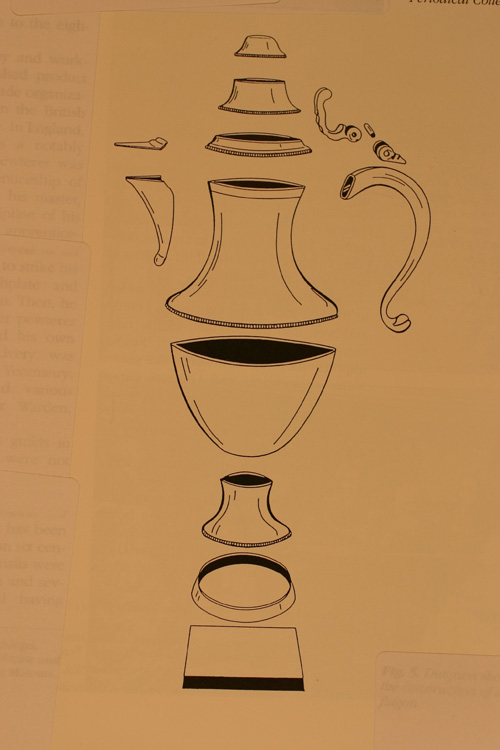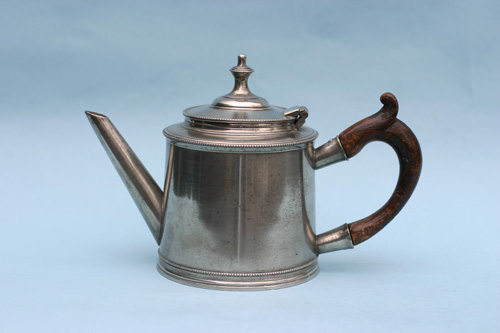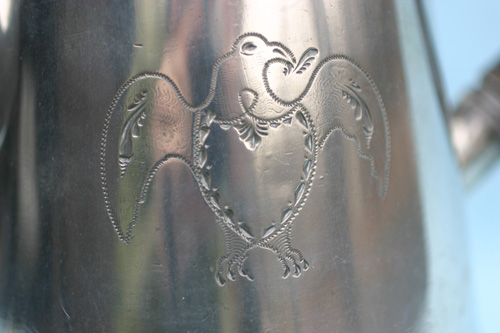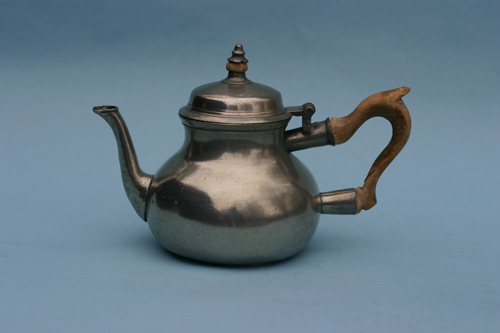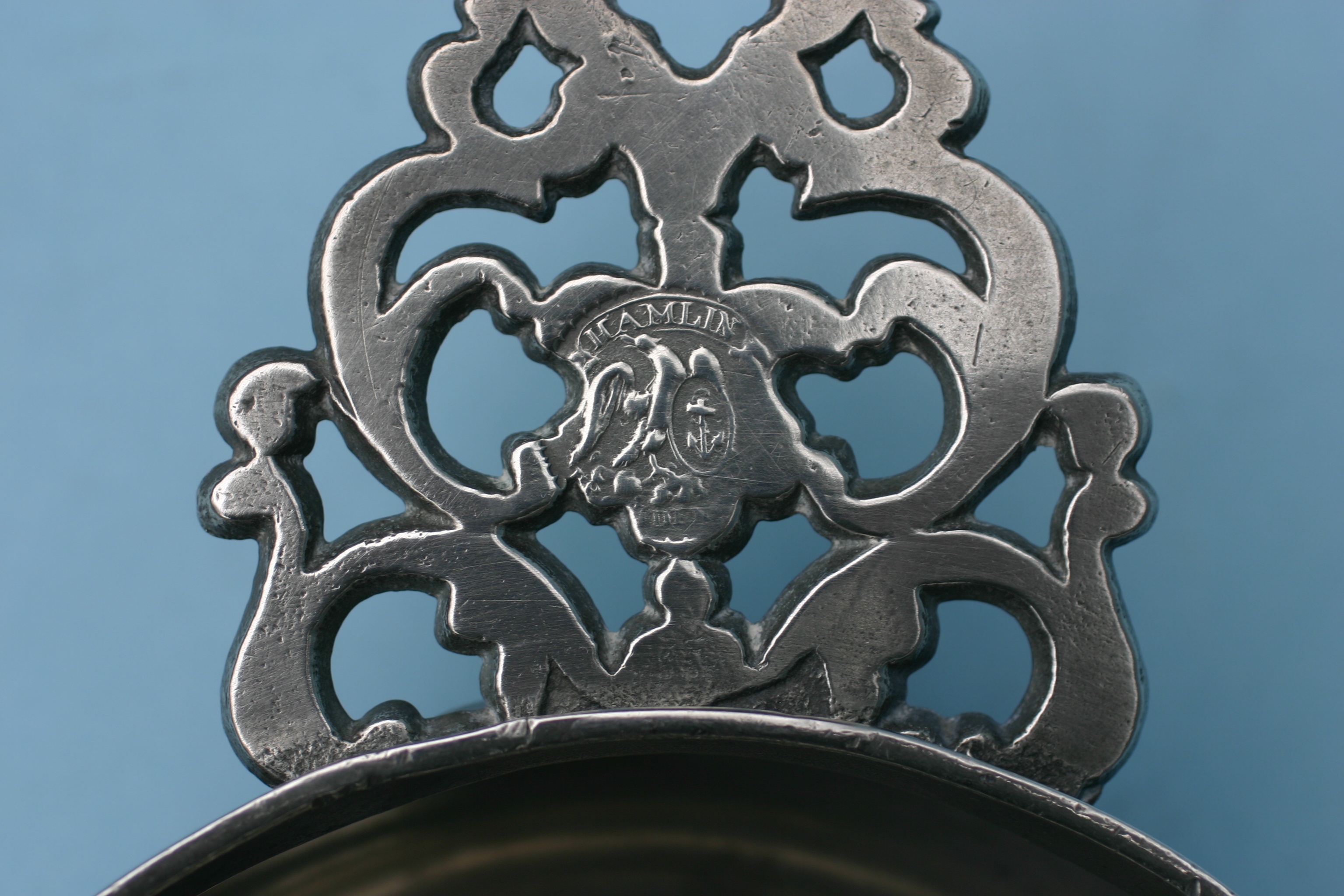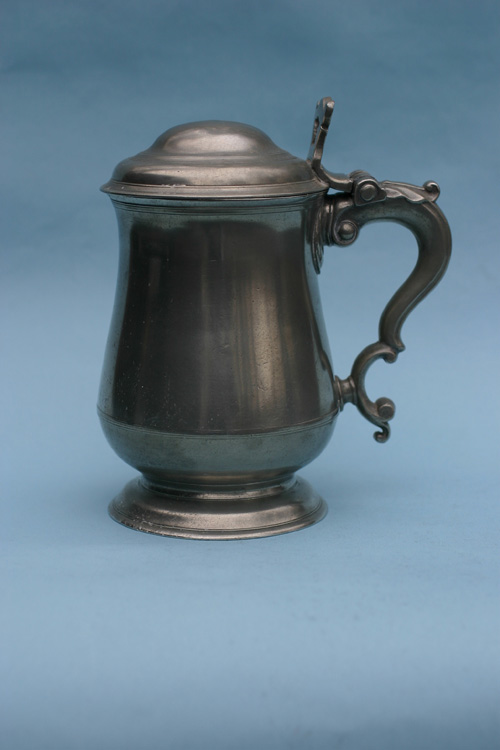
Home Structural Products & Services, Stairlifts
Structural Products & Services, Stairlifts
Furniture, Clocks,
Accessories
Antiques, Folk Art,
Fine Art, Auction Houses
PEWTER, A SHORT INTRODUCTION
By Don Herr, theherrsantiques.com
Pewter is an alloy whose principal element is tin. Copper, lead, bismuth, zinc, and antimony added in varying amounts give the admixture its variable weight and hardness. As a rule, the larger the proportion of tin, the better quality of the pewter. It was used in the home as well in the church. It was the common table ware of Colonial America in the 18th century and was used well into the 19th century. Nearly every conceivable form was made of pewter. Plates, basins, serving dishes, mugs, tankards, spoons, ladles, porringers, sugar bowls, tea pots, coffee pots, funnels, nursing bottles, measures, and even commodes and bedpans were used in the home. Graceful flagons, chalices, and patens were used in the church. |
What is Britannia? What is flatware? What is hollowware? How old is pewter? |
|
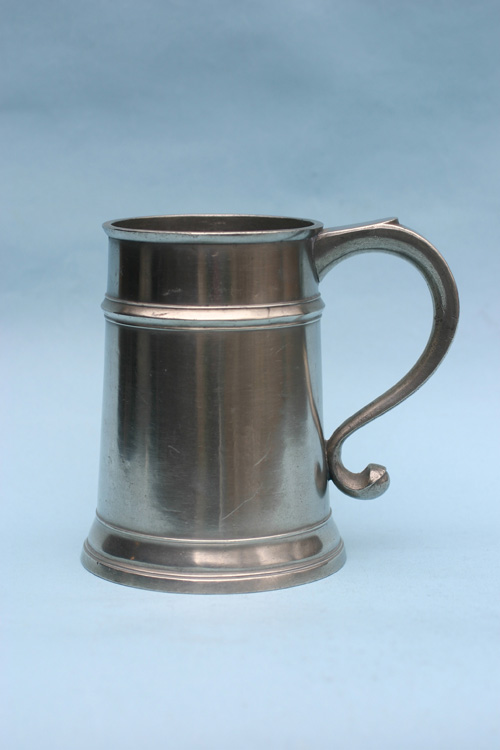 |
Are there regional differences?
Yes. Drum-shaped teapots made in the 18th century were popular in Philadelphia. (Figure 2). New York pewterers often used a high fillet as a decorative band to the bodies of mugs (Figure 3).
Was pewter ever engraved?
Beverly, Massachusetts makers tastefully engraved their attractive coffeepots (Figures 4,5).
The Boardmans of Hartford, Connecticut decorated coffeepots, creamers and sugar bowls with matching engraving (Figures 6,7).
What about English pewter?
British pewterers in London and the environs shipped tremendous amounts of pewter to Colonial ports such as Philadelphia, Boston and New York. And great quantities have survived. A few forms were made for export such as the John Langford teapot. (Figure 8).
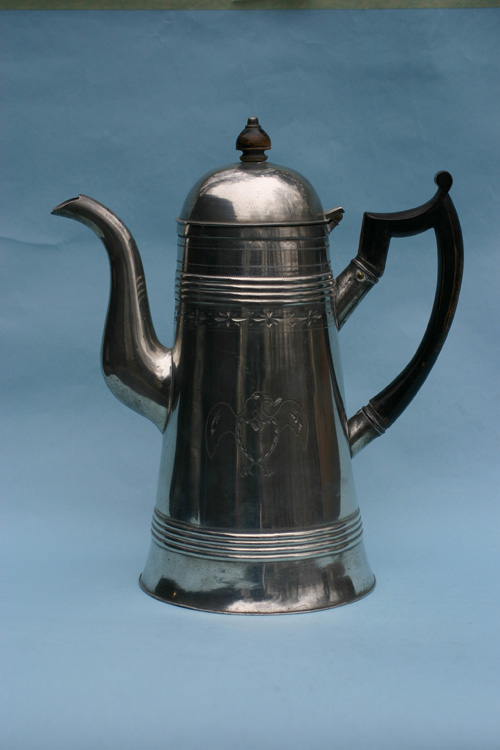 |
|
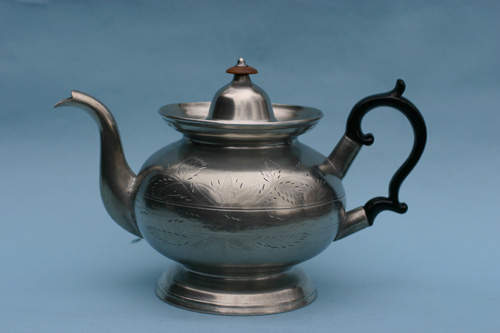 |
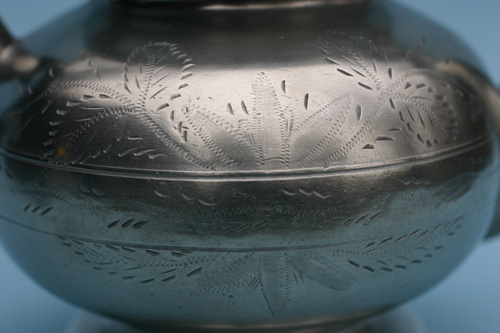 |
| Figure 6, 7. The Boardmans of Hartford, Connecticut engraved coffeepots, creamers, and sugar bowls. |
|
|
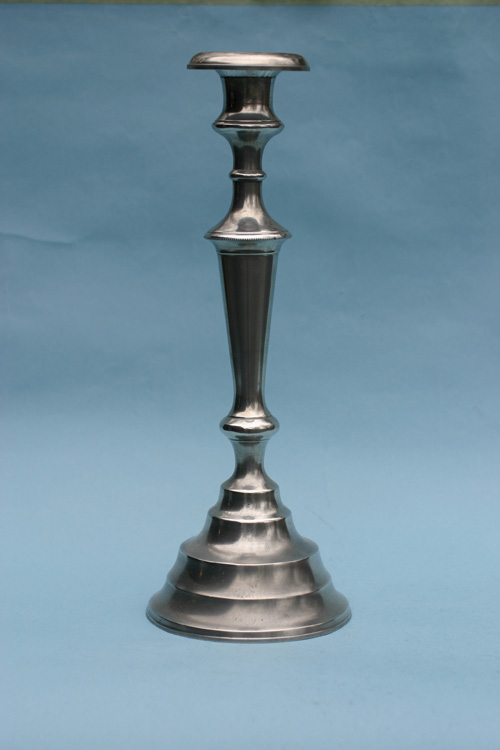 |
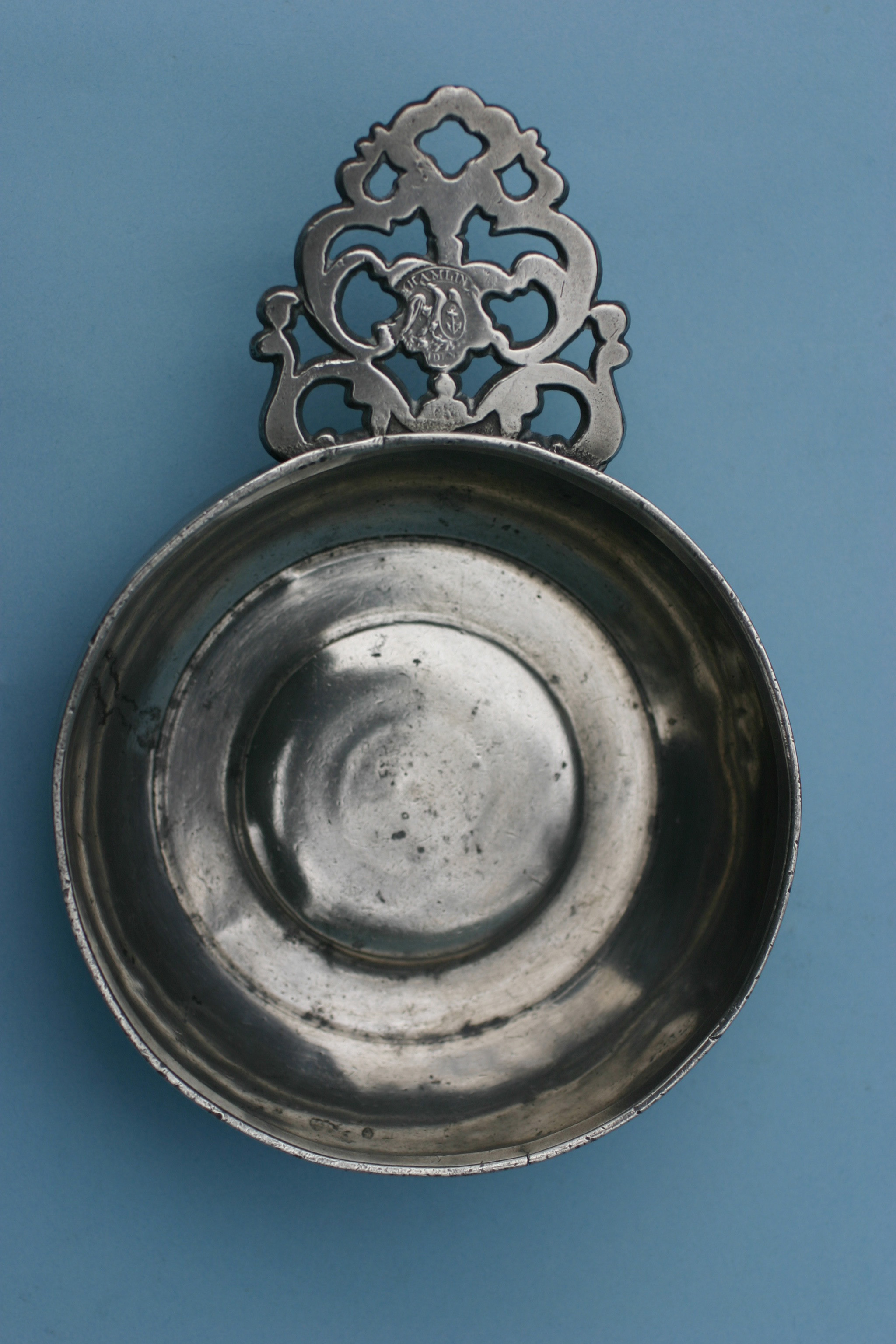 |
|
Can I get lead poisoning from pewter? But I want to use it. |
|
Where can I buy pewter?
As in any collecting field, read books, handle pewter, and learn as much as you can and become a knowledgeable collector. Attend antiques shows and auctions. And above all, buy from a reputable dealer. Preferably one that specializes and handles a lot of pewter and use their expertise and knowledge to avoid buying fakes and spurious pieces.
Is there a collectors club?
Yes. The Pewter Collectors' Club of America is composed of over 400 individuals and institutions. Membership offers the opportunity to learn about pewter, its manufacture, makers, and marks. American, British, and continental pewter are included. Dues are $60.00 annually and include the Bulletin, a semiannual scholarly, well-illustrated publication and semiannual newsletters that include information about regional meetings, auction prices and current news both here and abroad. Link: pewtercollectorsclub.org. Now on Facebook.
Editor's note: The Pewter Collectors of America held their annual Spring National Meeting at Glastonbury this year, which is how we made contact with Don Herr. Don and his wife Trish are based in Lancaster, Pennsylvania, and have been doing business as Herrs Antiques since 1975. They specialize in distinctive Pennsylvania German decorative arts such as painted furniture and smalls,Fraktur, baskets, folk art of the region, and 18th and 19th century American textiles and pewter for the discriminating collector. Their website, www.theherrsantiques.com, is really in a class by itself. Go there to see what we mean-- and give yourself plenty of time!
